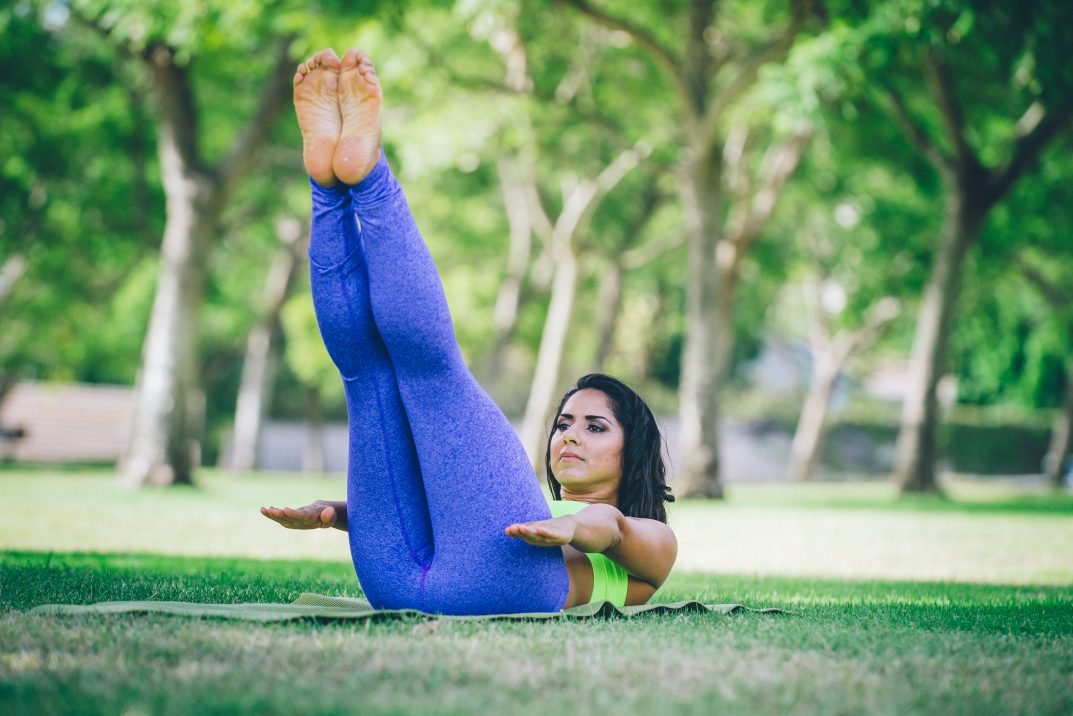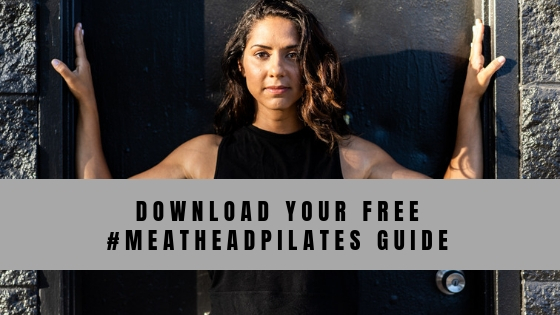To explore Pilates is to piece together a never-ending puzzle that heightens the awareness of your body and mind. When I began my Pilates practice at 24-years-old, all I felt and understood was how deeply connected I was to my core (a.k.a. “The Powerhouse) – a small but important piece of a much bigger puzzle I had yet to discover.
Years later, as I dove into Pilates during my teacher training, I was blown away by all the intricate details of the exercises. More and more puzzle pieces to play with, work with, and understand. The most interesting piece to me is the two-stretch – a concept that is better felt than it is explained. If you practice Pilates regularly, you might already know what the two-way stretch is: Full activation of the body while stretching and extending it in oppositional forces.
Ah, yes! Joseph Pilates was a genius ahead of his time in his understanding of the body and human movement, and that two-stretch really proves it!
Finding the Two-Way Stretch
The two-way stretch is unique to Pilates in that most of the exercises you can experience the simultaneous push and pull of every muscle, tendon, and ligament as you move. Exercises like the Double Leg Stretch, Spine Stretch Forward, and Swan are a few examples of the two-stretch in motion. It’s unlike weightlifting where we focus on a single muscle group, or think in terms of muscle contractions or simply carrying out the lift. When we do a push exercise we are strictly focused on doing just that – pushing! Same with a pull exercise like the row. We are fully engaged in the action of rowing, not in the simultaneous push and pull/ reach and lengthen that is so commonly heard and felt in a Pilates workout.
The two-way stretch is what enables you to move with fluidity, to push and pull in different directions in a single movement. This is what contributes to the feeling of being stretched, elongated, and worked all at the same time in Pilates.
Beginners might not understand the two-way stretch concept but they’ll certainly feel it as they progress in their practice. It might actually be what helps us fine-tune the movement and truly appreciate Pilates as more than a workout, but as a system of full-body and mind integration.
When I squat, I feel the movement everywhere. To me, a compound lift is full-body integration. It’s tough physically and mentally, but even a heavy squat can’t capture what I feel in body and mind in Pilates. At the heart of weight lifting is the ability to move heavy weight around. Whereas in Pilates, you’re fine-tuning movement down to the smallest detail.
Breaking Down the Two Way Stretch in the Double Leg Stretch
Let’s look at an exercise like the Double Leg Stretch, which is a classic two-way stretch movement. It appears early on the Mat order for good reason.
Start position: You’re in a tight ball, reaching for the ankles with the hands and stretching the thoracic spine as you lift into the C-curl. Your lungs and belly are out of air.
Breathing: As you extend the arms and legs in opposite directions, you inhale deeply, filling the low back with air for the purpose of protecting the spine and “carrying” the weight of the legs into the stomach. As you circle the arms around and return to your start position, you are emptying the body of air, melting the ribs, and trying to gain a deeper C-curl through the Powerhouse on the return.
Powerhouse: No surprise that this is always working. Inflating and deflating, holding the legs, releasing the hips, allowing the ribcage to act with your breath. The Powerhouse doesn’t rest in this exercise.
Two-Way Stretch: The legs and arms extend away from the body – the opposing forces, but they stay connected to the body through the Powerhouse. This stretches the back, the legs, the arms, the shoulders, and neck. You may not feel it as such because it’s hard work but it’s there! As you draw everything back in, you stretch the upper back. The neck, spine, and legs are always reaching toward something!
Now let’s try it with another exercise,the Open Leg Rocker.
Start position: Legs reaching out and lengthening the back of the legs. Lumbar spine slight light flexed, hands actively pushing into the ankles
Breathing: The inhale inflates the back, lungs, and ribs to help you stay curled as you move your rocker backwards. The exhale as you come back up to the top allows for slight upper thoracic extension. Yum!
Powerhouse: The legs connect and lift from the low belly not the hips. This is what helps make the legs feel very light.
Two-Way Stretch: As the hamstrings lengthen in the top position, the lower back gets slightly stretched as that area remains curved. As the same time, you lift the sternum up and forward to get some extension in the upper back. Here you have the simultaneous flexion and extension of the spine. As you rock back, you deepen the curl of the spine to get more stretch through the back. The push of the hands along the ankles or calves connects your arms to your upper back.
Do you see how much is happening in these two exercises?! The two-way stretch keeps showing up in some wonderful ways!
Next time you practice any Pilates exercise, be it alone or in a class setting, get mindful about where you feel the two-way stretch. The more your awareness around it increases, the more you’ll benefit from the exercises.



